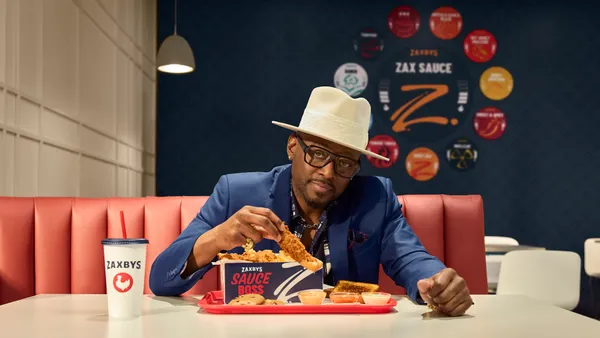Dive Brief:
- WPP further detailed its plans to restore growth in a press release today (Dec. 11), claiming that, going forward, the company will squarely focus on four business areas it views as crucial to brands: communications, experience, commerce and technology. A streamlined approach is part of what CEO Mark Read called a "simpler offer" to clients and comes as part of a push to turn the ad holding group into a "creative transformation company." The goal is to reach organic growth of at least 15% by the end of 2021, putting WPP on par with its agency peers.
- Copping to becoming unwieldy, WPP said it will simplify its network by restructuring around three principles: being more client-centric, having fewer but more integrated companies internally and honing a focus at the country level to tap into localized strengths. Speaking to Campaign, Read, who took the helm of WPP in September, said that this realignment will not include additional major agency mergers like that of J. Walter Thompson and Wunderman and VML and Young & Rubicam. He told the publication he expects to reduce WPP's workforce by 3,500 over the next three years, with any new hires going toward "senior creative talent, technology and growth." WPP staffs roughly 130,000 people globally.
- As part of the repositioning, WPP unveiled a refreshed visual identity developed with agencies Superunion and Landor. Also new: the company is establishing an executive committee that pulls from both company and corporate leadership for the first time, making a break with the leadership model under founder and former CEO Martin Sorrell, who resigned in April.
Dive Insight:
Early criticisms of Read's turnaround plan — at least internally, per Campaign — is that it lacks a radical spark. The goal from a bottom-line business perspective is fairly straightforward: to put WPP on a more even keel with its competitors by 2021. But for those who have watched the world's largest ad holding group be battered by account losses — this year for some major marketers, including American Express, PepsiCo and Ford — and slashed growth forecasts, simply returning to a level ground might read as bland.
WPP saw like-for-like organic sales slip 1.5% compared to the 0.3% in growth forecast by analysts in Q3 results reported in October. The company said Tuesday it expects organic net sales growth to dip by 0.5% for 2018. In the Q3 earning report, it forecast the figure would fall between 0.5% and 1%, according to The Wall Street Journal.
In today's release, WPP called out recent account wins, such as that of Volkswagen, as indicative that a focus on being a creative transformation company, one that melds traditional marketing duties with technology, can be successful. Volkswagen late last month put WPP in charge of its global creative business. However, the change in agencies also came during a marketing overhaul that includes heavy cost-cutting for the automaker, according to Automotive News.
Others might've expected plans for more agency combinations following the buzzy creation of Wunderman Thompson and VMLY&R, which both saw WPP bringing together legacy creative shops with more digitally-oriented ones. But it's clear that Read wants to ramp up the streamlining of WPP's existing businesses rather than merging them, including through the new executive committee. WPP still plans to sell its stake in the data and market research division Kantar, with any potential transaction likely to be announced in Q2 2019, according to today's release.
One area to look out for in 2019 will be how WPP taps into technology partnerships to buoy its business and meet mounting client demands for specialties in fields like data analytics. Its Grey agency last week announced an exclusive partnership with Betaworks, for example. Under the deal, Grey is Betaworks' sole marketing partner, while the startup incubator, which has investments in firms like Twitter, Venmo and Medium, will offer the shop technology insights that it can then work into its client strategies.















